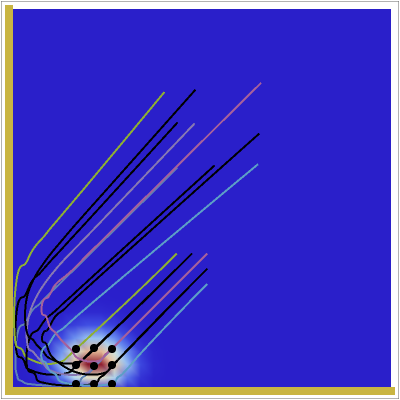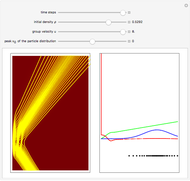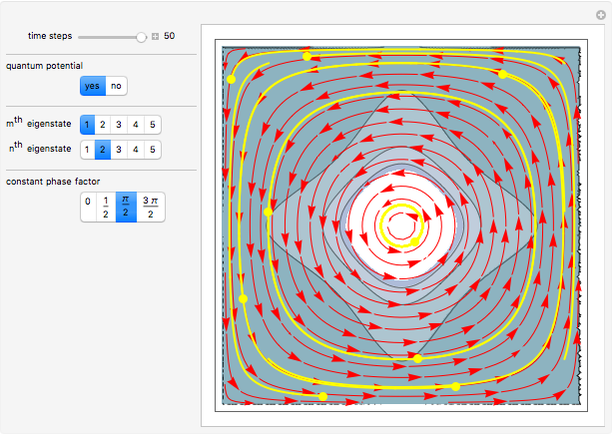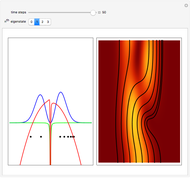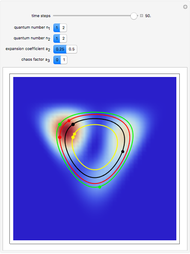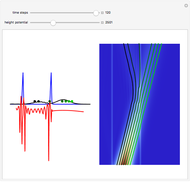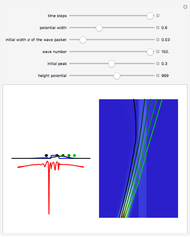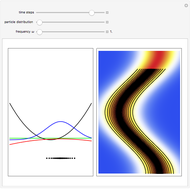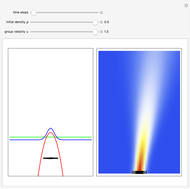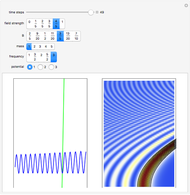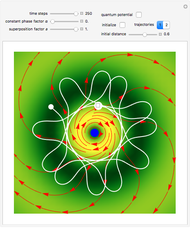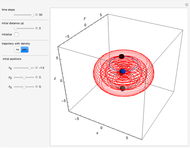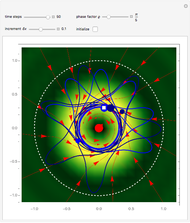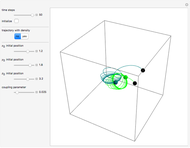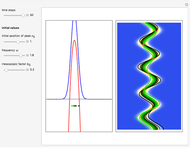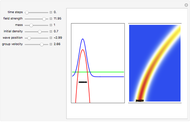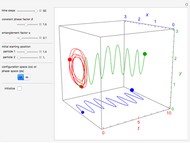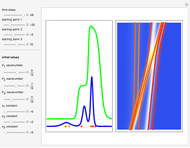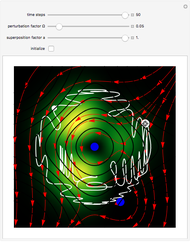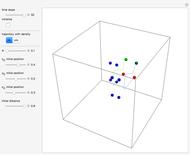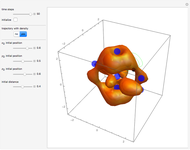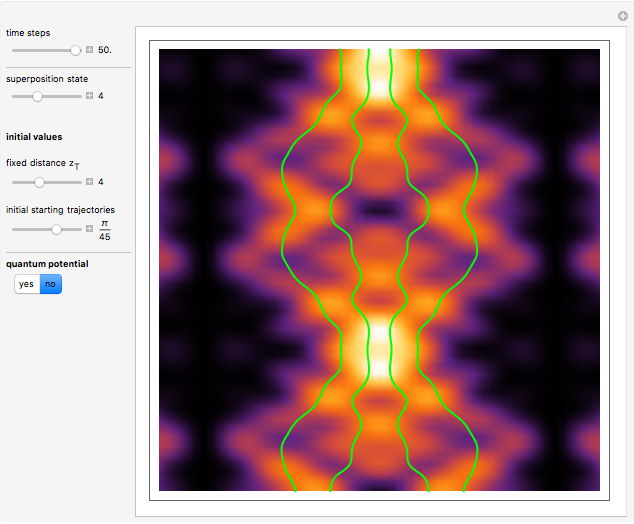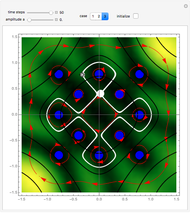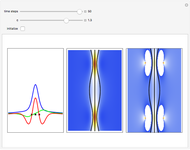Causal Interpretation of Two-Dimensional Time-Dependent Scattering

Requires a Wolfram Notebook System
Interact on desktop, mobile and cloud with the free Wolfram Player or other Wolfram Language products.
This Demonstration studies a time-dependent collision of a two-dimensional wave packet with infinite wall barriers placed at right angles in the ( ,
,  ) configuration space. In this case the analytic wavefunction is described by a product state:
) configuration space. In this case the analytic wavefunction is described by a product state:
 for
for  and
and  , where
, where  and
and  are standard one-dimensional free-particle solutions of the Schrödinger equation (SE) and where
are standard one-dimensional free-particle solutions of the Schrödinger equation (SE) and where  is a solution of the two-dimensional SE for free particles. In the causal interpretation of quantum theory (de Broglie–Bohm theory), the trajectories of the particles could be calculated from the phase of the total wavefunction. Contrary to the motion in (
is a solution of the two-dimensional SE for free particles. In the causal interpretation of quantum theory (de Broglie–Bohm theory), the trajectories of the particles could be calculated from the phase of the total wavefunction. Contrary to the motion in ( ,
,  ) space the trajectories can cross space-time points in the (
) space the trajectories can cross space-time points in the ( ,
,  ) configuration space, as long as they do so at different times. Because of the product state of the wavefunction, the velocity in the
) configuration space, as long as they do so at different times. Because of the product state of the wavefunction, the velocity in the  direction is completely independent of the velocity in the
direction is completely independent of the velocity in the  direction. The graphic shows the particles, the whole paths of the particles, the squared wavefunction, and the infinite wall barriers (yellow).
direction. The graphic shows the particles, the whole paths of the particles, the squared wavefunction, and the infinite wall barriers (yellow).
Contributed by: Klaus von Bloh (March 2011)
Open content licensed under CC BY-NC-SA
Snapshots
Details
Reference:
R. W. Robinett, "Image Method Solutions for Free-Particle Wave Packets in Wedge Geometries," Eur. J. Phys., 27, 2006 pp. 281–289. Available online at arXiv:quant-ph/0512108v1 (2005).
